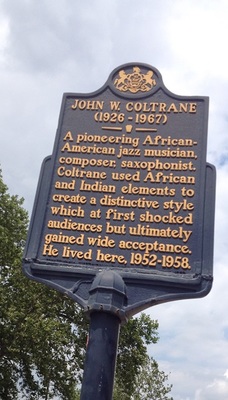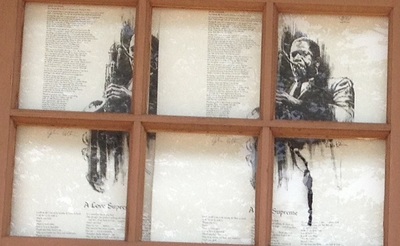John Coltrane's onetime neighborhood in north-central Philadelphia has a cemetery quiet about it. The row houses, packed together with not even the width of a saxophone reed between them, are all peeled paint and broken windows, many of the buildings burned black. Weeds grow through cracks in the littered, empty sidewalks.
At 1511 North 33rd Street, Coltrane's brick row house with the peaked frontal pediment was a nice place in 1952, though, when Coltrane bought it to serve himself, his mother, his cousin Mary, his friend James Kinzer and then his first wife, Naima, whom he married in 1955. Elegant bay windows on one floor, arched windows recessed into the brick on the floor above, where John lived -- the design showed Victorian flair. There were trees in back, and Coltrane could have practiced in the park across the street without bothering anyone, not that his thrilling runs and silvery tone would have raised many objections.
Having moved from his North Carolina birthplace to find work after graduating from high school in 1943, Coltrane made Philadelphia his home until the late '50s, when he moved to New York. His growing reputation after gigs with Earl Bostic, Dizzy Gillespie, Thelonious Monk and Miles Davis, as well as his widely recognized talents as a leader on records for Prestige and Blue Note, made it essential to establish himself in the jazz capital.
And Philadelphia's working musicians could not indulge themselves as full-time Artists. Between more high-profile engagements, Coltrane played the blues and "walked the bar" in Philly dives, honking and posturing for the local drunks. He even became a drunk and a junkie himself, until necessity and spirituality motivated him to clean up.
Today, there's a plaque on a pole in front of the vacant Coltrane house, and that's it. Attempts to turn the structure into a viable historic site have not borne fruit. More than likely, the whole area will be bulldozed. Meanwhile, the city's biggest tourist attraction -- bigger than Independence Hall or the Liberty Bell -- is a statue of filmic boxer Rocky Balboa next to the "Rocky Steps" in front of the Philadelphia Museum of Art.
I was thinking about all this, and wondering how the Coltranes could have bought this beautiful three-story house through Mrs. Coltrane's savings and a G.I. loan (John had done a short stint in the Navy) for only 10 percent down on its $10,000 list price. I strolled half a block in the humid June heat and found the answer.
The sidewalk ends at a chain-link fence next to an overpass, beneath which runs a stretch of several railroad tracks. Interruptions by a train whistle, or "Trane Whistle," as Oliver Nelson named one of his tunes, must have annoyed local residents a lot more than John Coltrane's endless scales. That kind of thing keeps property values low.
As I looked down, a tanker train rumbled under the bridge, followed on another track by a passenger train, both blowing their horns to beat hell. I called them the Blue Train and the Cannonball.
Thank you, Mr. Coltrane. That was thoughtful of you.
* * *
PHOTOS BY FUZZY BRAKE AND DEBI DOORZ.


